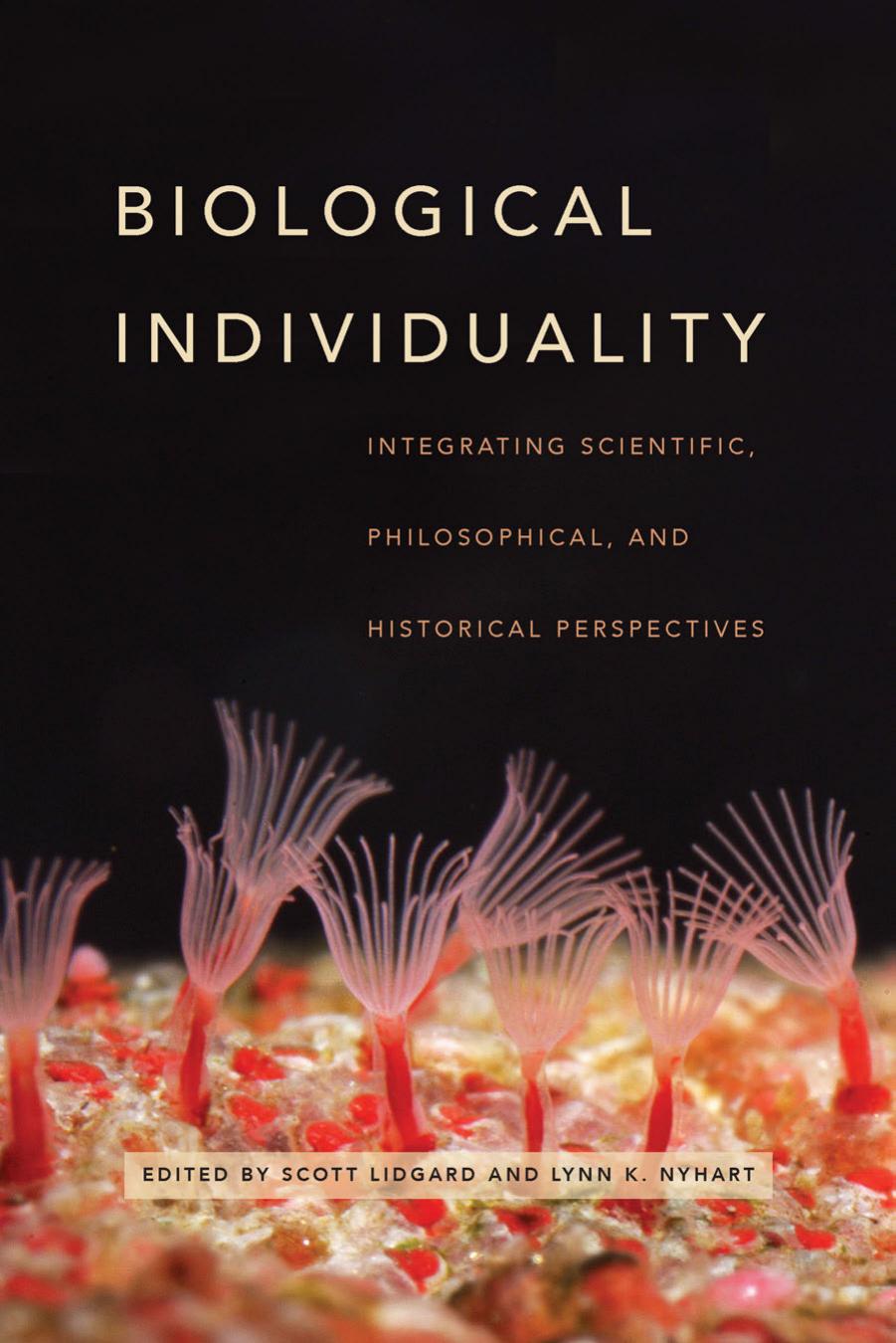Biological Individuality: Integrating Scientific, Philosophical, and Historical Perspectives by Scott Lidgard & Lynn K. Nyhart

Author:Scott Lidgard & Lynn K. Nyhart [Lidgard, Scott & Nyhart, Lynn K.]
Language: eng
Format: epub, pdf
ISBN: 9780226446318
Publisher: The University of Chicago Press
Published: 2017-05-02T06:00:00+00:00
7
Biological Individuality and Enkapsis: From Martin Heidenhain’s Synthesiology to the Völkisch National Community
OLIVIER RIEPPEL
Introduction
Individuality is generally tied to indivisibility and self-identity, and hence analyzed in terms of Leibniz’s Law of the “Indiscernability of Identicals,” which states that numerically identical entities share exactly the same properties. This is a strong, logical (philosophical) conception of individuality, where individuation is grounded in essential intrinsic properties. Since the time of Ancient Greek philosophers, biological individuals such as humans have accordingly, and traditionally, been individuated through their soul. More recently, in discussions of genetic engineering and gene therapy, individual crops, livestock, and humans have been individuated through their genomes, the latter construed as an essential intrinsic property of any one organism. But unlike the immaterial soul, the material basis of the genome undergoes constant change, not only in the transition from ancestor to descendant, but also during the life-cycle of a given organism. At the prokaryote level of biological organization, genomes are, or at least can be, open systems that are in constant exchange with their biological environment. Genomes are thus revealed to form eminently dynamic—that is, processual—systems individuated not by an immutable essence, but through their relational properties and propensities (Barnes and Dupré 2008).
The same is true of all biological systems. The philosophical attempt to individuate a human being on the basis of essential intrinsic properties invites insurmountable problems (Gilbert et al. 2012), which disappear if instead the human individual, as indeed any organism, gene, or species, is understood as a dynamic relational system. In his analysis of the concept of individuality, Ludwig von Bertalanffy (1932, 269) found it to be loaded with natural language connotations to such a degree that it could not perform useful theoretical work in biology. He consequently advocated abandoning the terms “individuality” and “individual” in discussions of biological complexity, and introduced the term “system” instead. A system in that sense is a spatiotemporally located complex whole, causally integrated and at the same time individuated through the relational properties prevalent amongst its parts. Significantly, Bertalanffy (1932) launched into a discussion of individuality only after having reviewed Martin Heidenhain’s concept of enkapsis. While the fundamentals of this idea go back to German Romanticism and its proponents, such as Schelling and Goethe (Richards 2002; Rieppel 2011a), the discussion here will be based on Heidenhain’s conception of the enkaptic hierarchy.
An enkaptic (nested) hierarchy is, in brief, a nested hierarchy of complex wholes with emergent properties at all levels of inclusiveness. The complex wholes that make up such a hierarchy are spatiotemporally located, functionally integrated relational systems—that is, individuals of different levels of complexity. The dynamic, indeed processual systems, or individuals, that make up the enkaptic hierarchy are subject to upwards as well as downwards causation. The enkaptic hierarchy so conceived is not only of historical importance with both biological and socio-political implications, but is implicit in many concepts of modern biology. Genes as parts of gene regulatory networks (if at least partially hierarchically structured), organs or organ-systems as parts of organisms, individual organisms
Download
Biological Individuality: Integrating Scientific, Philosophical, and Historical Perspectives by Scott Lidgard & Lynn K. Nyhart.pdf
This site does not store any files on its server. We only index and link to content provided by other sites. Please contact the content providers to delete copyright contents if any and email us, we'll remove relevant links or contents immediately.
Enlightenment Now: The Case for Reason, Science, Humanism, and Progress by Steven Pinker(7235)
A Journey Through Charms and Defence Against the Dark Arts (Harry Potter: A Journey Through…) by Pottermore Publishing(4781)
The Immortal Life of Henrietta Lacks by Rebecca Skloot(4525)
A Journey Through Divination and Astronomy by Publishing Pottermore(4344)
Elon Musk by Ashlee Vance(4032)
Origin Story: A Big History of Everything by David Christian(3649)
COSMOS by Carl Sagan(3554)
Alchemy and Alchemists by C. J. S. Thompson(3451)
Bad Pharma by Ben Goldacre(3356)
Enlightenment Now by Steven Pinker(3338)
Shadow of Night by Deborah Harkness(3303)
Inferior by Angela Saini(3276)
A Mind For Numbers: How to Excel at Math and Science (Even If You Flunked Algebra) by Barbara Oakley(3221)
Origin Story by David Christian(3147)
The Code Book by Simon Singh(3074)
Signature in the Cell: DNA and the Evidence for Intelligent Design by Stephen C. Meyer(3071)
The Elements by Theodore Gray(2998)
A Brief History of Time by Stephen Hawking(2962)
A Journey Through Potions and Herbology (A Journey Through…) by Pottermore Publishing(2828)
